Art World
The Wild Blue Yonder: How the Accidental Discovery of an Eye-Popping New Color Changed a Chemist’s Life
Mas Subramanian describes how Crayola—and artnet News—helped bring YInMn Blue to the masses.
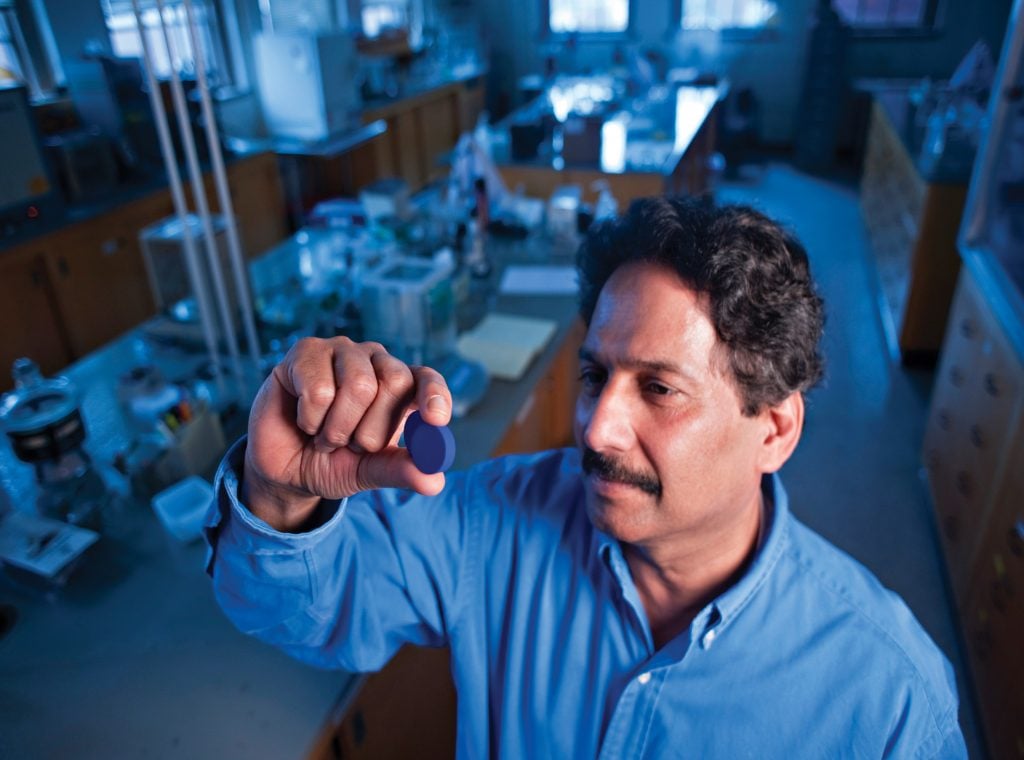
Mas Subramanian describes how Crayola—and artnet News—helped bring YInMn Blue to the masses.

Sarah Cascone

YInMn Blue, the first new blue pigment identified in 200 years, was always an astounding discovery—it just took the general public some time to catch on.
Now, eight years after the pigment was first identified, YInMn Blue—and its creator—are finally getting their due. Samples of the color will appear in “The Blue Experience,” an upcoming exhibition at the Ôkhra, Ochres and Colors Conservatory in the south of France. And this fall, Crayola will launch a new crayon based on the color.
The hue—the first new blue to surface since cobalt in 1802—was born in 2009, when a lab accident led chemist Mas Subramanian and his team to realize that a super-heated mixture of the elements Yttrium, Indium and Manganese created a vibrantly blue complex inorganic pigment (hence the somewhat-clunky name). The first man-made pigment was Ancient Egypt’s Egyptian blue, making YInMn Blue the latest in a historic line of blue discoveries.

Shades of YInMn Blue as invented at Oregon State University by Mas Subramanian. Courtesy of Mas Subramanian.
The OSU team published their findings in a top-tier scientific journal, and in late May of 2015, entered into a licensing agreement with the Shepherd Color Company to sell the new pigment commercially. But word was slow to spread. “The art community didn’t take notice,” Subramanian told Artnet News. “The news only reached the companies that make paint.”
That began to change after an article about the discovery appeared in Artnet News (“The Chemist Who Discovered the World’s Newest Blue Explains Its Miraculous Properties“) almost exactly one year ago. It was one of our most widely read stories of the year. “Your write-up actually… really went viral,” Subramanian said. “The article inspired people a lot of people to write about it, and created a buzz in the art community.” Overnight, YInMn Blue had become a sensation.
Currently, you can buy the bold blue shade from Australian art supply company Derivan’s Matisse line (“It looks very good, actually!” Subramanian assured us).
But there are still some obstacles to getting your hands on this new supply, which hasn’t yet been approved in the US for artist use. Oregon-based Gamblin Artist Colors notes that YInMn Blue is about six times as expensive as Cerulean or Cobalt blues, primarily because one of its components, Indium, is a rare earth element.
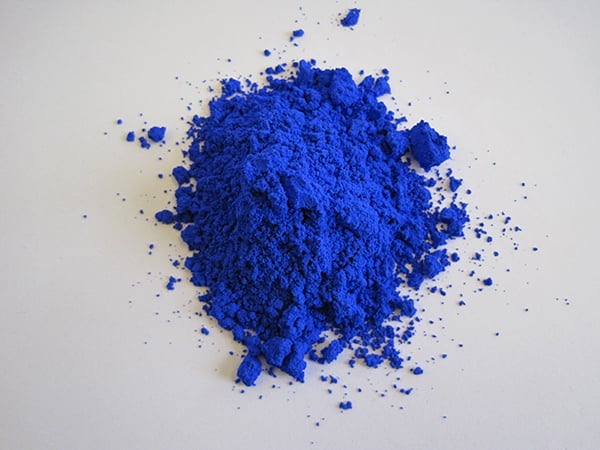
The newly-discovered YInMn blue is now commercially available from the Shepherd Color Company. Courtesy of Oregon State University.
Subramanian and his team have also created a whole range of different colors in the YInMn Blue series—including purples, greens, yellows, and oranges—by adding new elements to the mix. There are various shades of the original Blue, made by adjusting the amount of Manganese in the compound. His wife, chemist and artist Rajeevi Subramanian has already begun painting with the new pigments.
But proof that YInMn Blue had truly arrived came last month, when OSU held an event with Crayola, announcing that the newly discovered pigment would be the company’s newest crayon color.
The announcement was a big deal for Subramanian, who found himself mobbed by children and their parents at the event. “They wanted to take pictures with me actually,” he recalled. “This is something I could only dream of, to have made something that inspires children to want to know how science works.”
According to Subramanian, Crayola had been planning on introducing a new shade of blue to replace Dandelion, a yellow shade first introduced in 1990 and retired earlier this year. When the company learned of his discovery, YInMn Blue seemed like a natural fit. “The Shepherd Color Company and Crayola have been in contact for a long time about this,” he explained.
The crayon will be released this fall, with a new name chosen by the public. Crayola has yet to release a shortlist of finalists, but the popular choices on social media toward the end of the submission period earlier this month were “Covfefe,” based on a mysterious late-night Twitter typo from Donald Trump, and “Chiron,” after the main character in 2016 Best Picture winner Moonlight, and the name of a centaur in Greek mythology.
We spoke with Subramanian about his discovery, its sudden popularity, and his thoughts about YInMn Blue’s impending Crayola rebranding.
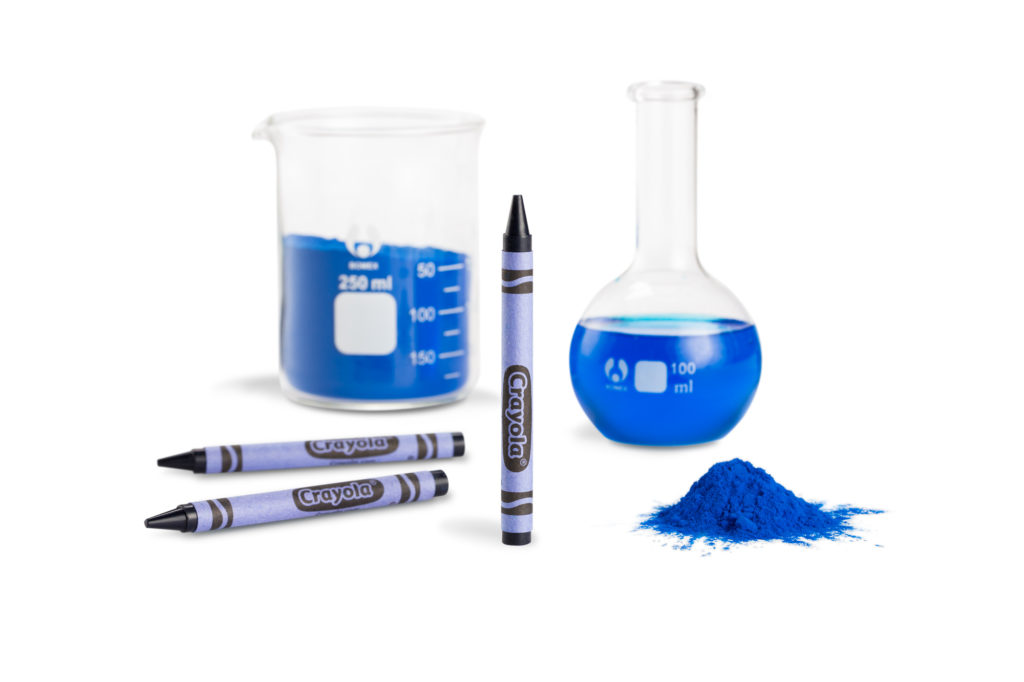
The YInMn Blue crayon. Courtesy of Crayola.
What is involved in the process of turning YInMn Blue into a crayon?
Crayola is working on it now with the Shepherd Color Company. Once they get EPA approval, they want to use the actual YinMn Blue pigment in the crayon. They can’t do it yet, because these crayons are going to be used by children. Toxicity tests are being conducted by various agencies, and hopefully that approval will come through soon.
In the meantime, they are mixing different colors to get a hue similar to the YInMn Blue. They’ve sent us some crayons, and they are very close to the blue we make. Crayola is really careful to say it’s inspired by our discovery, because right now the crayon does not have the pigment.
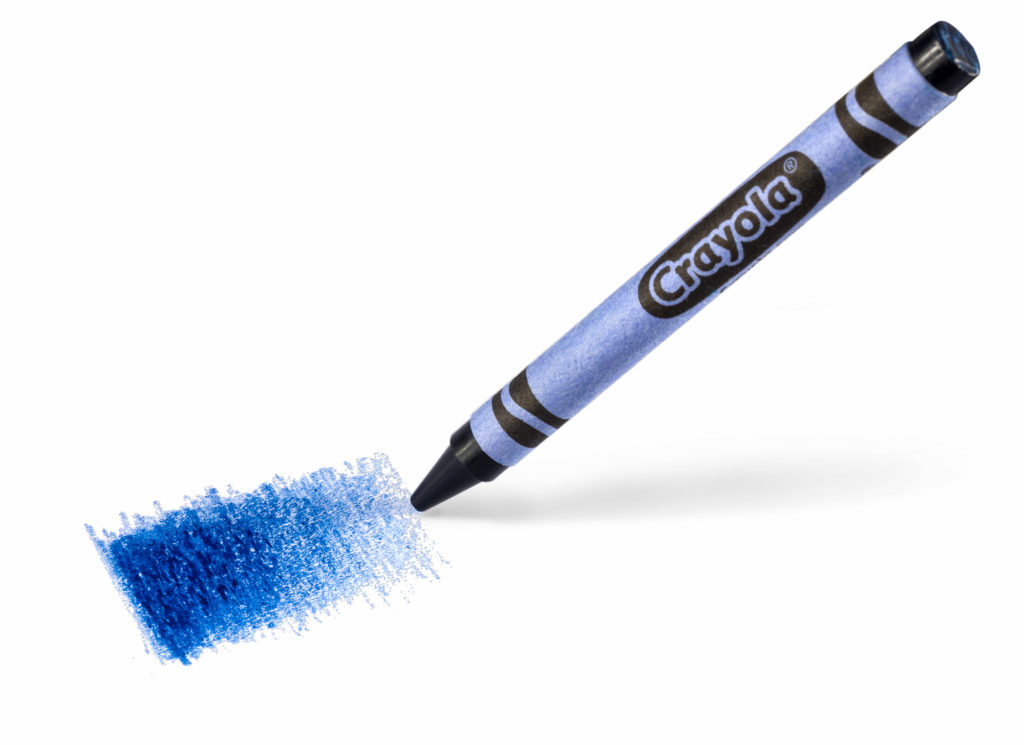
The YInMn blue crayon. Courtesy of Crayola.
What do you think about Crayola renaming YInMn Blue?
YinMn Blue is an interesting name for scientists, but they think it is too scientific for the children to use it. Shepherd Color Company will likely continue to sell it as YInMn Blue, with a note that it is “also known as” the Crayola name.
All the folks I know, they all entered the competition [to name the crayon]. I think they have thousands of submissions—people are suggesting some crazy names! We’d like to see something connected with Oregon, if possible. Derivan calls their paint Oregon Blue. I think they’ll consult with us on what names will be selected as finalists.
A lot of people also suggested “Mas Blue,” like “Yves Klein Blue,” after me. “Mas” also means “more” in Spanish. I’d be happy if they named it that.
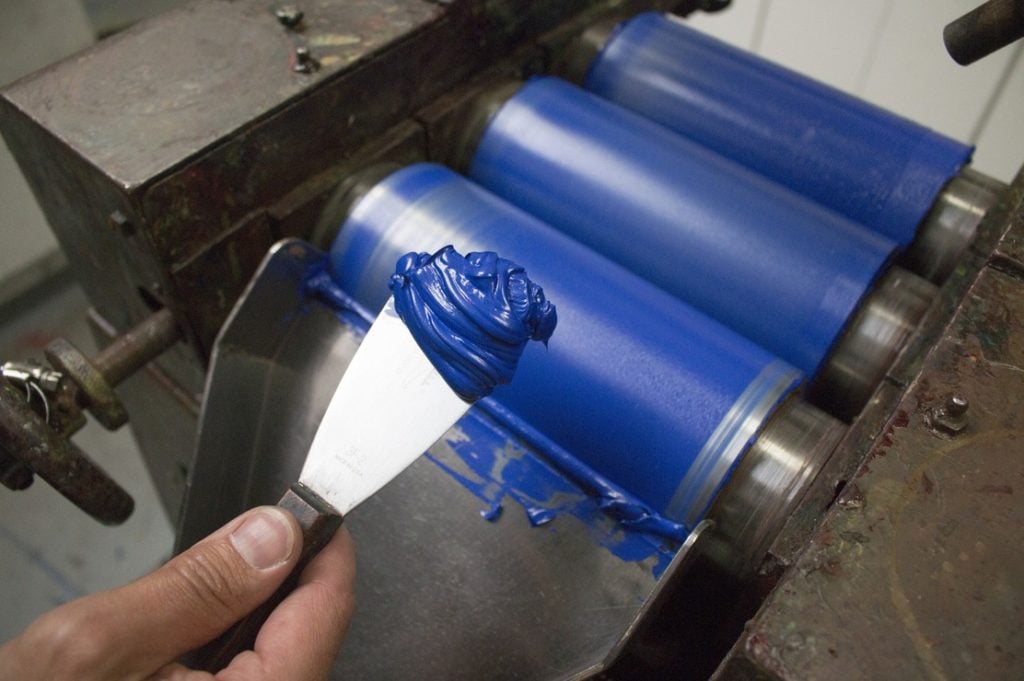
YInMn blue paint being made by Gamblin Artist Colors. Courtesy of Gamblin Artist Colors.
Did you enjoy drawing with crayons as a child?
Of course! We all use crayons. When I was a kid growing up in India we didn’t have Crayola, but I used similar crayons, so this is really amazing for me.
Crayola is a company all about colors. Their products plant the seeds of creativity and innovation at a very early age, which is essential to scientists. Most of my discoveries in the lab are because of my curiosity and creativity. I believe curiosity starts at a very early age and continues to grow within us.
Scientists are very curious, just like kids. I mix the elements of the periodic table in different ratios and try to make new compounds—that’s how I discovered the new blue. There’s a lot of similarities to the way children play with crayons and we play with elements of the periodic table, so this partnership with Crayola is very exciting, and very personal to me.

YInMn Blue as invented at Oregon State University by Mas Subramanian. Courtesy of Mas Subramanian.
How significant is the discovery of YInMn Blue?
These types of discoveries happen very very rarely. Sometimes I sit at home and I think, “Wow.” I’ve been a scientist 35, 40 years. I have 60 patents. But I never imagined I would discover something like this in my lifetime, with the amount of excitement it created among artists and scientists and technologists.
In the Middle Ages, they used Lapis Lazuli, which is very expensive. There was recently a competition to make synthetic Lapis Lazuli, but the last blue that was discovered was cobalt blue, back in 1802. There are only a handful of blue pigments known.
For 200 years, people were trying to create a new blue pigment, and no one could make it—and now it just appears in our lab. Finally, we made it, not even looking for it!
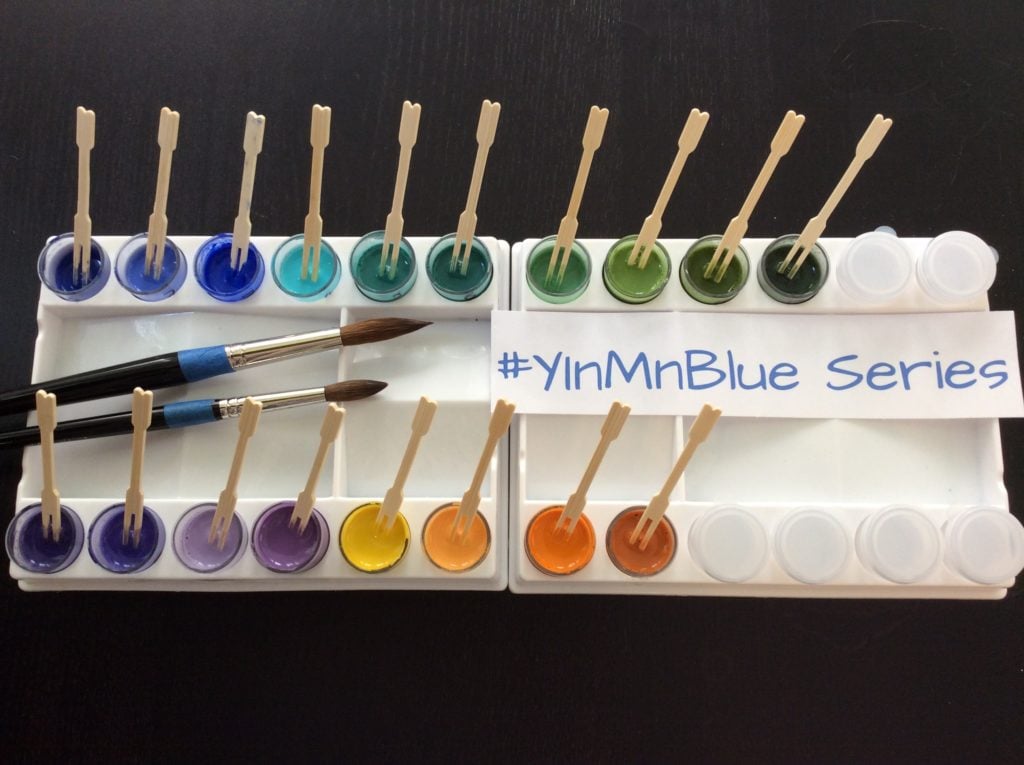
The additional colors in the YInMn Blue series as invented at Oregon State University by Mas Subramanian. Courtesy of Mas Subramanian.
What makes blue in general, and YInMn Blue in particular, so special?
It’s got everything—it’s got beautiful hues, it’s very durable, and it’s got heat reflecting properties, which is rare in blues.
We did an experiment with two model houses and put YInMn Blue coating on one of the roofs and Shepherd Color Company’s regular Cobalt blue on the other. The YInMn Blue house was 15 degrees Celsius cooler than the Cobalt blue one. The technology community is very interested in how this can help keep buildings cool.
But blue has always been fascinating to the public—people have done books on it! It is a color that represents sadness; it represents divinity, and is seen in most depictions of the Virgin Mary. I was asked to participate in a panel event at the Getty Museum in Los Angeles, “What Does Blue Mean?” earlier this month, based on my discovery of YInMn Blue. Rarely do scientists have the opportunity to do this sort of thing.
The excitement of this blue never fades. It’s just gone beyond my imagination, to be honest.
This interview has been edited and condensed.